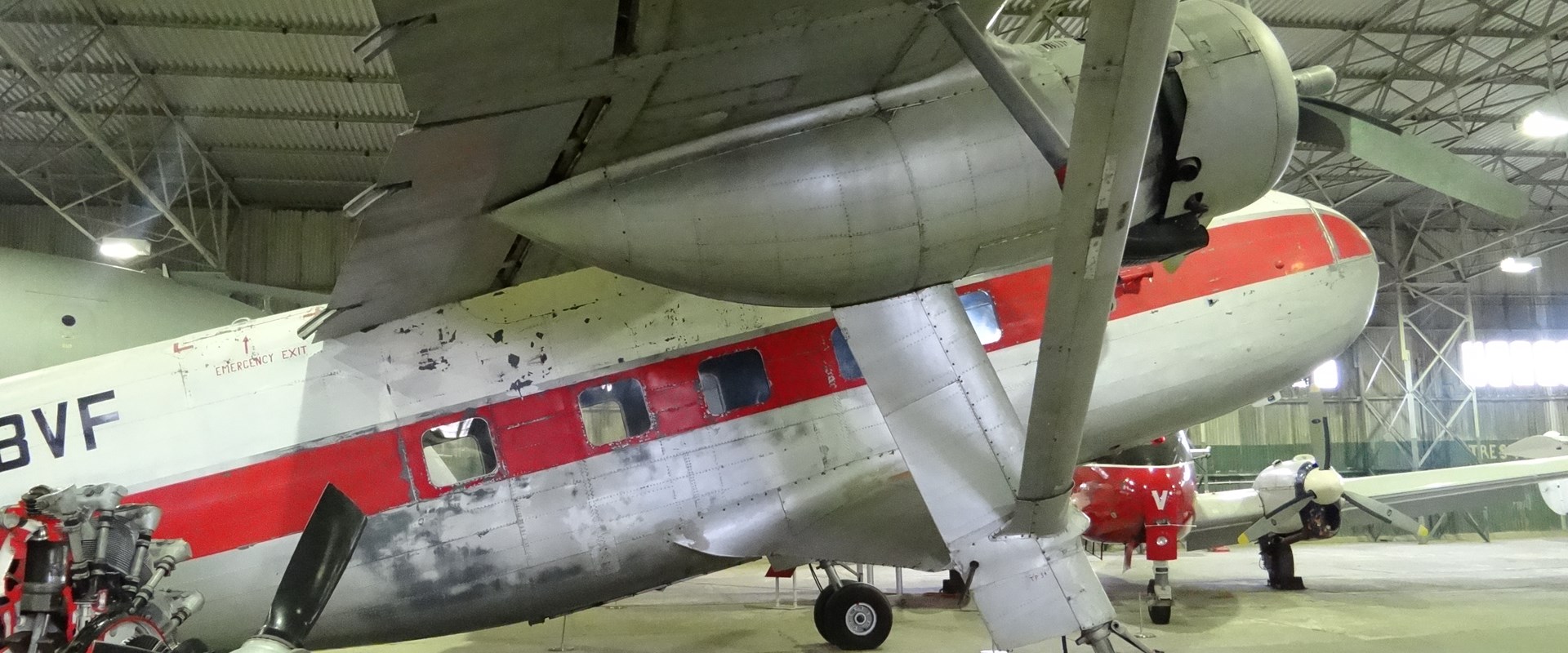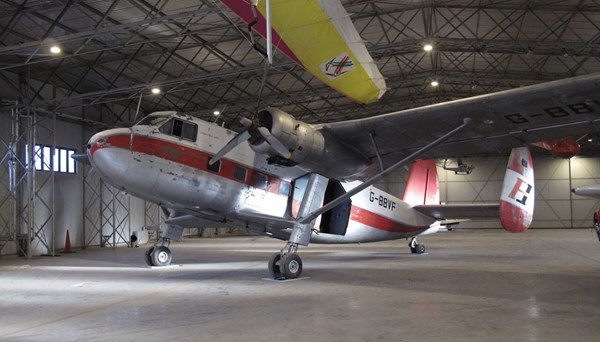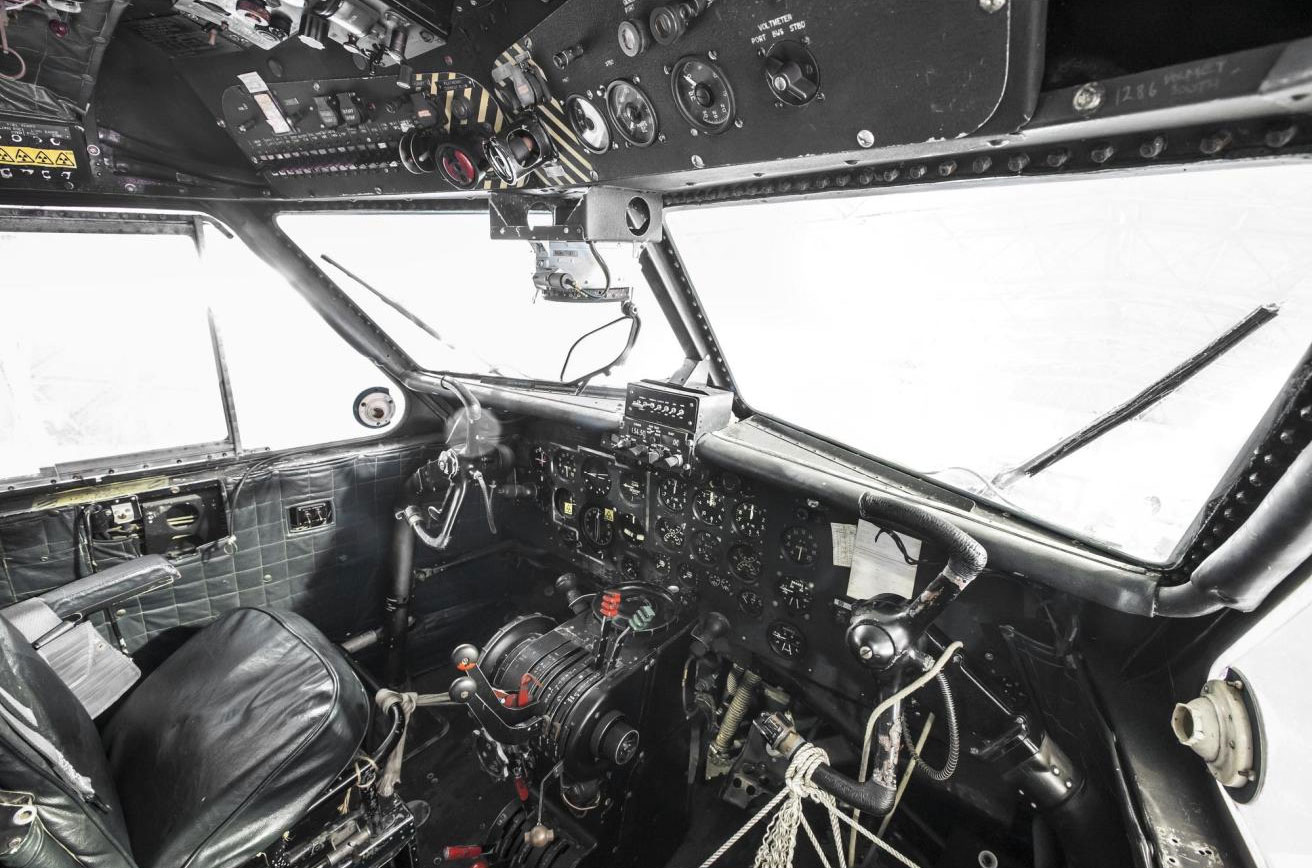Key in a search term below to search our website.
Key in a search term below to search our website.

Only 89 Twin Pioneers were ever built – and you can see one in the National Museum of Flight.
Date
1959
Crew
2 (pilot and co-pilot)
Passengers
16
Dimensions
Length 13.8m, height 3.7m, wingspan 23.33m
Engines
2 x Alvis Leonides piston engines
Top speed
165 mph (266 km/h)
Range
791 miles (1,287 km)
Museum reference
On display
Civil Aviation Hangar, National Museum of Flight
Did you know?
From 1956-1968 the primary user of the Twin Pioneer the Royal Air Force, with operational service in Aden, Malaysia, Borneo and elsewhere.

Above: The Twin Pioneer in the Civil Aviation Hangar at the National Museum of Flight.
The rugged 'Twin Pin' was the second design from Prestwick based company Scottish Aviation to achieve production. A short take-off and landing (STOL) general purpose transport aircraft, the prototype flew on 25 June 1955 at Prestwick Airport, Scotland. The aircraft had a promising future until the second prototype crashed, putting off potential buyers.
Only 89 examples were built, with the biggest customer being the RAF, though orders for limited numbers were received from various countries around the world that recognised the aircraft's capabilities.
The example in the National Museum of Flight served with the RAF as XM961 in Borneo and was eventually bought by civilian company Flight One at Staverton Airport, which had a small fleet of Twin Pioneers for aerial survey work. It was sold to the Museum after another aircraft was blown into it when parked during a gale in 1982.

Above: The cockpit of the Twin Pioneer.